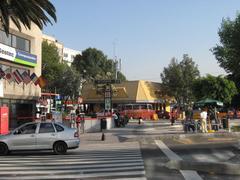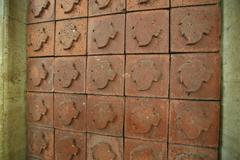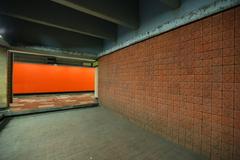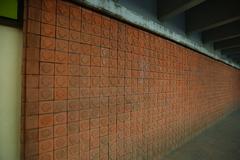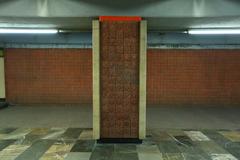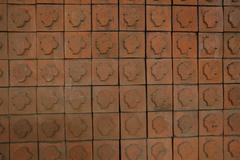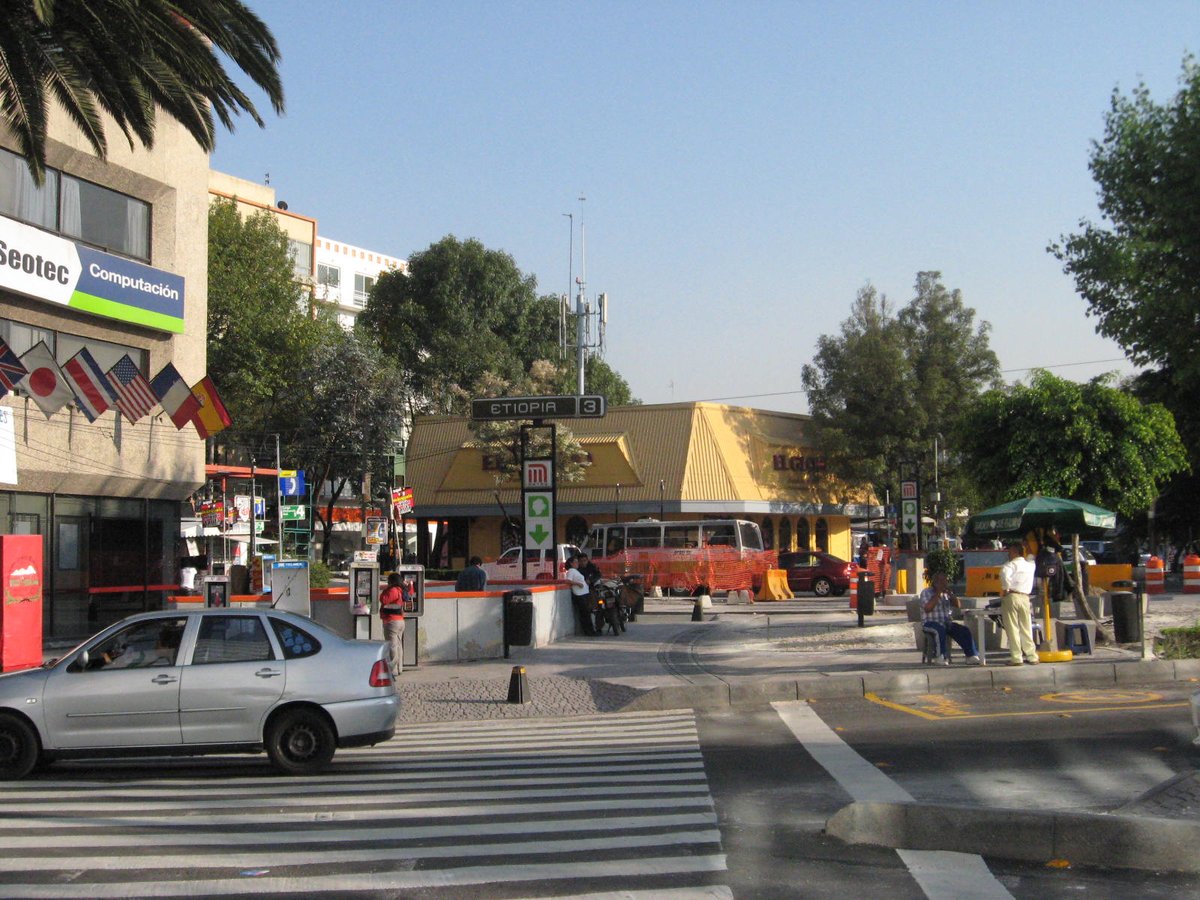
Etiopía–Plaza De La Transparencia Mexico City: Visiting Hours, Tickets, and Travel Guide
Date: 15/06/2025
Introduction
Etiopía–Plaza De La Transparencia is much more than a metro station—it is a vibrant symbol of Mexico City’s international diplomacy, civic values, and rich urban culture. Located in the heart of the Benito Juárez borough, this station stands as a testament to the longstanding friendship between Mexico and Ethiopia, while also reflecting Mexico’s commitment to government transparency. This comprehensive guide covers the station’s historical background, visiting hours, ticketing, accessibility, nearby attractions, and travel tips, making it an essential reference for both tourists and locals seeking to explore one of Mexico City’s most meaningful historical sites (Milenio; Metro CDMX; Academia Lab).
Table of Contents
- Historical Significance and Origins
- Symbolism and International Friendship
- The 1954 Visit of Emperor Haile Selassie I
- Station Evolution and Naming
- Civic Engagement and Transparency
- Visiting Information: Hours, Tickets, and Accessibility
- Station Layout and Services
- Travel Tips and Nearby Attractions
- Cultural Displays and Urban Impact
- Frequently Asked Questions (FAQ)
- Visual Resources
- Conclusion
- References
Historical Significance and Origins
Etiopía–Plaza De La Transparencia traces its name and identity back to the 1930s, when Mexico was one of the few countries to openly condemn Italy’s invasion of Ethiopia during the Second Italo-Ethiopian War. The original Glorieta de Etiopía, a prominent traffic circle at Avenida Cuauhtémoc and Avenida Xola, became a symbol of solidarity and international friendship (Milenio).
Symbolism and International Friendship
The station’s logo—a lion’s head—pays homage to the Lion of Judah, a national and imperial emblem of Ethiopia. This visual identity, present throughout the station, signifies the enduring diplomatic ties between the two nations (Wikiwand). The mirrored naming of public spaces, such as Plaza México and a metro station in Addis Ababa, further cements this rare example of urban diplomacy (Expansion Política).
The 1954 Visit of Emperor Haile Selassie I
A pivotal event in this relationship occurred when Emperor Haile Selassie I visited Mexico in 1954, marking the first visit of an African head of state to the country. He inaugurated the Glorieta de Etiopía and planted palm trees as gifts of gratitude (Milenio; Mexico Alternativo UNAM). A commemorative plaque in the station honors this historic occasion.
Station Evolution and Naming
The Glorieta de Etiopía was removed in the 1970s to make way for Metro Line 3, but the station retained the name Etiopía to preserve its legacy (Wikiwand). In 2009, the name expanded to Etiopía–Plaza De La Transparencia, reflecting the nearby Instituto Nacional de Transparencia, Acceso a la Información y Protección de Datos Personales (INAI) (Metro CDMX).
Civic Engagement and Transparency
The inclusion of “Plaza de la Transparencia” in the station’s name and the addition of the INAI’s stylized emblem in the logo underscore Mexico’s dedication to transparent governance and democratic values (Academia Lab). The station is a daily reminder of civic responsibility and international solidarity.
Visiting Information: Hours, Tickets, and Accessibility
-
Operating Hours:
- Monday to Friday: 5:00 AM – 12:00 AM
- Saturday: 6:00 AM – 12:00 AM
- Sunday & Holidays: 7:00 AM – 12:00 AM (Metro CDMX)
-
Ticket Prices:
- Single ride: 5 MXN (approx. $0.21 USD)
- Purchase at station booths, vending machines, or with Metro Card
- Free access for seniors, people with disabilities, children under 5, INJUVE youth, and uniformed police officers (cdmx-metro.com)
-
Accessibility:
- Elevators, ramps, tactile paving, Braille signage, and priority seating ensure inclusivity for all travelers.
Station Layout and Services
- Entrances: Located at Avenida Cuauhtémoc, Avenida Xola, Cumbres de Maltrata, and Diagonal de San Antonio for easy access to the Narvarte neighborhood.
- Platform: Spacious island platform serving northbound and southbound trains on Line 3.
- Signage: Clear bilingual signs and Metro maps.
- Ticketing: Multiple booths and automated machines; Metro Card recharge available.
- Safety: CCTV, uniformed security, emergency intercoms, and clear evacuation routes.
- Amenities: Restrooms, seating, information booths, lost and found, retail kiosks, free public Wi-Fi, and vending machines.
- Operational Frequency: Trains every 2–4 minutes during peak hours, 5–7 minutes off-peak.
- Connectivity: Metrobús Line 3, public buses, and authorized taxi stands nearby.
Travel Tips and Nearby Attractions
- Peak Hours: Avoid 7:00–9:00 AM and 6:00–8:00 PM for a more relaxed visit.
- Photographic Spots: Capture the iconic lion logo, commemorative plaques, and Ethiopian-inspired sculptures.
- Neighborhood Exploration: Discover Narvarte’s local markets, parks, and culinary scene. Notable nearby sites include Diagonal de San Antonio park, Iglesia del Purísimo Corazón de María, and various cafés and taquerías (theunconventionalroute.com).
Cultural Displays and Urban Impact
Etiopía–Plaza De La Transparencia features rotating cultural exhibitions in display cases, a commemorative plaque for Emperor Haile Selassie I, and Ethiopian-inspired art. These elements foster a sense of public memory and cultural pride, while the station’s transformation from a historical glorieta to a modern transit hub illustrates Mexico City’s evolving urban landscape (Mexico Alternativo UNAM).
Frequently Asked Questions (FAQ)
Q: What are the station’s operating hours?
A: Monday to Friday 5:00 AM–12:00 AM; Saturday 6:00 AM–12:00 AM; Sunday and holidays 7:00 AM–12:00 AM.
Q: How much does a ticket cost?
A: 5 MXN per ride. Tickets are available at the station or with a Metro Card.
Q: Is the station accessible for people with disabilities?
A: Yes, with elevators, ramps, tactile paving, and Braille signs.
Q: Are there guided tours or special events?
A: While the station offers rotating exhibitions, local cultural groups sometimes organize walking tours that include the station.
Q: What are nearby attractions?
A: Narvarte Market, Diagonal de San Antonio park, Iglesia del Purísimo Corazón de María, and local restaurants.
Q: Can I take photos inside the station?
A: Yes, but please follow Metro regulations and respect other passengers.
Visual Resources
- [Image: Etiopía–Plaza De La Transparencia metro entrance, alt: “Etiopía–Plaza De La Transparencia Metro station entrance in Mexico City”]
- [Image: Lion head logo, alt: “Lion head logo symbolizing Ethiopia at Etiopía–Plaza De La Transparencia”]
- [Image: Cultural display, alt: “Ethiopian sculpture at Etiopía–Plaza De La Transparencia Metro station”]
Interactive maps and virtual tours are available on the official Metro CDMX website.
Conclusion
Etiopía–Plaza De La Transparencia is more than a transit station—it’s a living monument to Mexico City’s historical narrative, global relationships, and civic values. With its accessible facilities, affordable ticketing, and cultural significance, the station is both a gateway and a destination for anyone wanting to engage with Mexico City’s heritage. Plan your visit with confidence, explore the neighborhood, and take in the unique stories this metro station has to offer. For real-time updates, schedules, and travel tips, consult the Metro CDMX website and consider downloading transit apps such as Audiala.
References
- Milenio: Historia de la estación Etiopía
- Metro CDMX: Etiopía–Plaza De La Transparencia
- Academia Lab: Estación de metro Etiopía–Plaza De La Transparencia
- Expansion Política
- Wikiwand: Etiopía-Plaza De La Transparencia metro station
- Mexico Alternativo UNAM
- theunconventionalroute.com: Mexico City Travel Tips
- Rome2Rio: Mexico City to Etiopía–Plaza de la Transparencia Station
- cdmx-metro.com: Etiopía-Plaza De La Transparencia
- Metro CDMX: Línea 3, Etiopía-Plaza De La Transparencia
